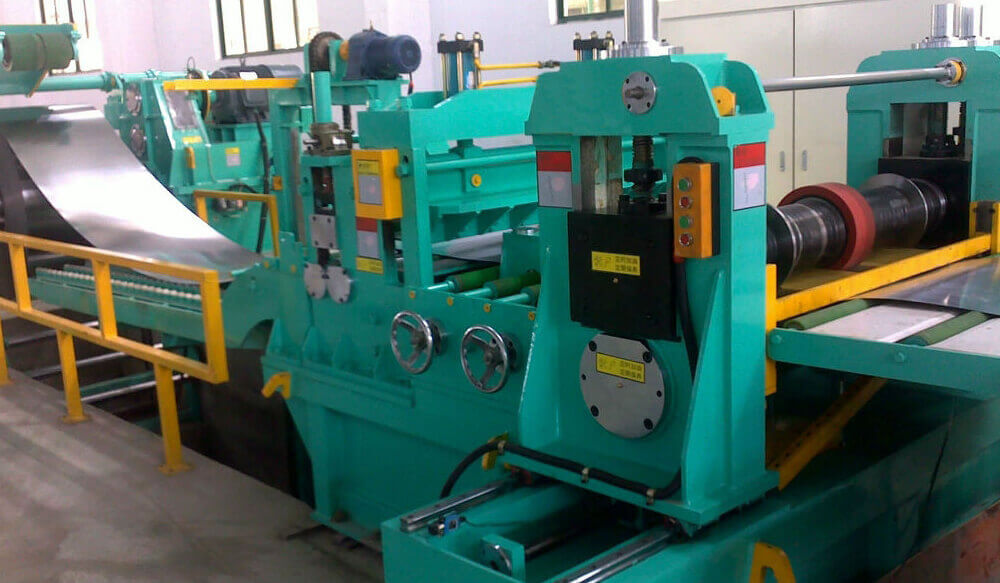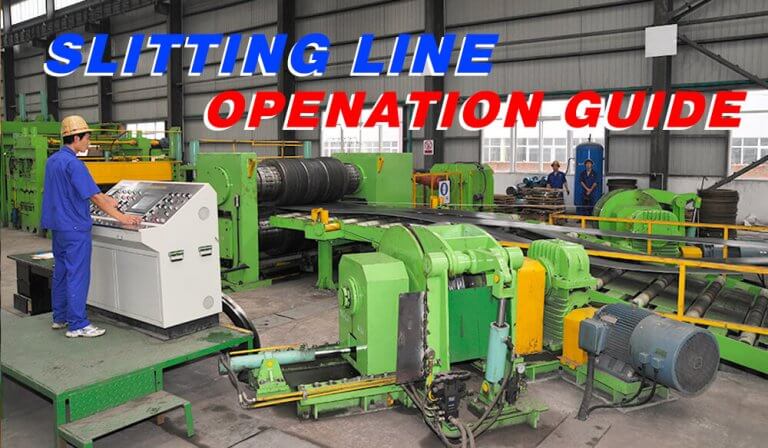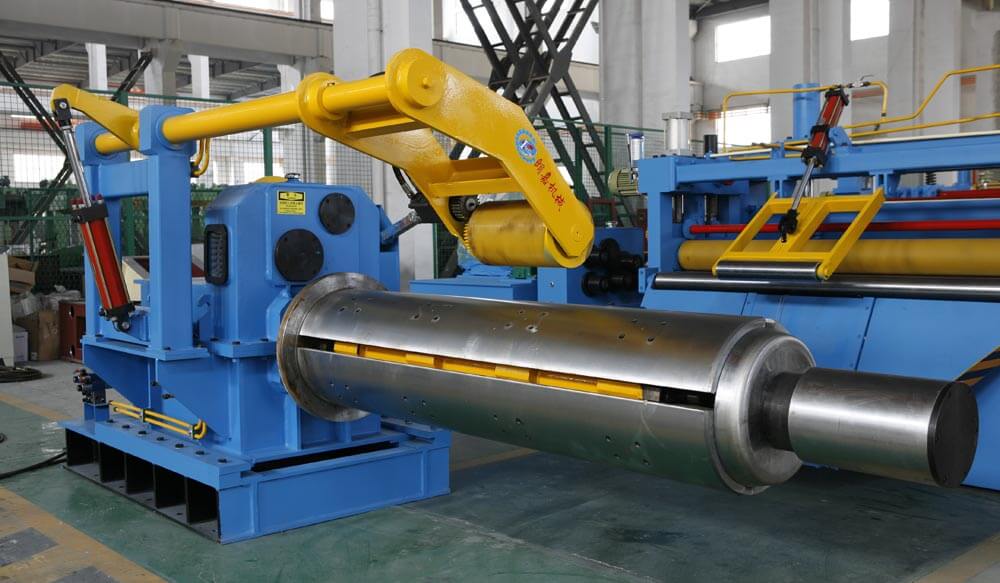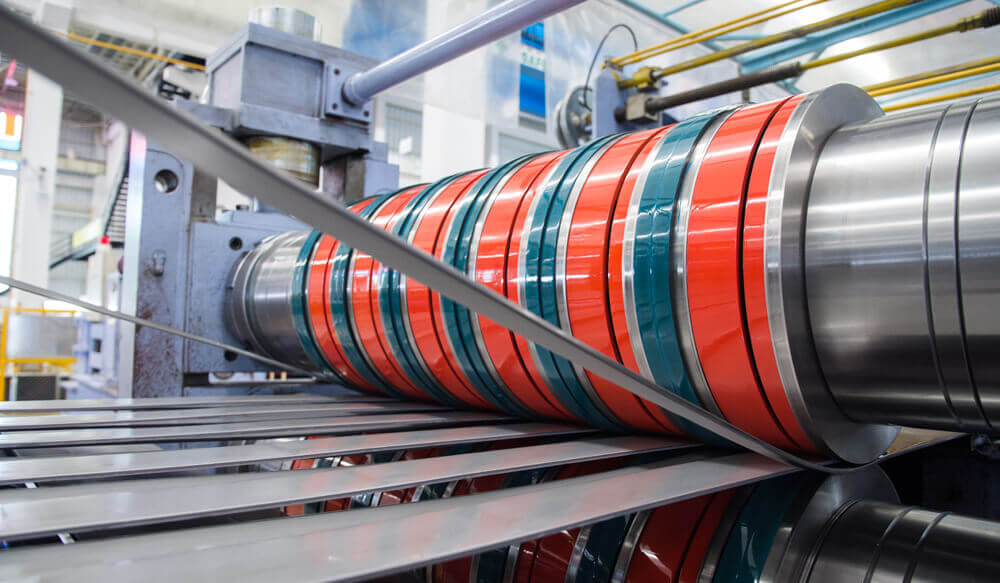
How to operate Slitting Line?

How to operate Slitting Machines? We do five steps like the following.
- Prepare for some jobs before run Slitting lines.
- Choose the right Slitting Blades sizes & spacers sizes & skim sizes.
- Grind Slitting Blades and maintain skim and spacers.
- Do Safety protection during production.
- Equipment maintenance.
These steps are all important for running Slitting lines. Let me explain step by step in detail:
1.Prepare for jobs before run Slitting Line
(1.) Carefully inspect all parts of the Slitting Machine, then maintain the equipment, To ensure Slitting Line run smoothly.
(2) According to the production schedule, prepare for raw material according to varieties and specifications, and place them neatly, safe and reliable.
(3) The team leader carefully organizes the operating personnel, ensures that the personnel in each position are in their respective positions.
(4) Implement safety measures, emphasize labor discipline, and ensure safe production.
2.Choose the right Slitting Blades sizes & spacers sizes & skim sizes.
Choose the right sizes should be according to thickness and hardness of slitting material, generally according to the following rules.
(1)Blade thickness: more than 3 times the thickness of the cut plate.
(2) Blade diameter: more than 40 times the thickness of the cut plate.
(3) The blade extension is more than 25 times the thickness of the sheared plate.
(4) If blades are with keyways, the keyway corners must be round to prevent stress concentration.
3.Grind Slitting Blades and maintain skim and spacers.
During Slitting blade usage, due to the long-term anti-extrusion against the plate, so the wear and obtuse angle of the knife-edge, the metal fatigue layer is anti-extrusion appears in blade part, Ensure slitting quality and edge sharpen and dimensional tolerance. Necessary to grind the worn blades by removing the metal fatigue layer of the blade, to and ensure the sharpness of the blade.
Grind plastic ring: Because the outer diameter is less worn during usage, and the outer diameter of the blade is relatively large after multiple grinding, the apron should be ground accordingly to ensure its performance. The amount of grinding depends on the outer diameter of the blade.
4. Do Safety protection during production.
(1) Keep the workshop clean and tidy, and walk through safe passages.
(2) The overhead crane is directed by a special person, and the gestures must be clear. Hanging objects are strictly prohibited from passing over the equipment and pedestrians.
(3) It is strictly forbidden for anyone to cross and touch the running production equipment and steel belt.
(4) The reliability of various safety protection devices, signals, signs, and instruments must be checked frequently, and they are not allowed to be dismantled at will.
(5) When the raw materials in the workshop are placed and lifted in layers, the steel coils must be hooked and stored under safe conditions to prevent the steel coils from slipping and rolling. It is strictly forbidden to operate or command in violation of regulations.
(6) Cut off the power supply of the unit and turn off the lighting, electric fans, and other facilities in the workshop.
5. Equipment maintenance.
After finish, this productive task, Inspect Slitting Line and maintain some parts need to.
(1) The operator should understand the function and performance of the Slitting line, master the correct use method, assign personnel and posts, and follow the cross operation method of “cleaning, lubricating, tightening, debugging, and anti-corrosion” for one less maintenance per shift.
(2) The contact surface of each sliding block of the slitting machine should be cleaned and oiled frequently to prevent damage to the sliding surface. The four sliding blocks on the moving beam should be cleaned during disassembly and assembly, and the lifting knife can only be moved after spraying hydraulic oil with an oil can , To prevent the sliding surface from being burnt and causing the reduction of equipment accuracy.
(3) The air filter of the DC motor fan should be changed at least once every 3 days to ensure that the DC motor is well ventilated to prevent damage to the motor due to temperature rise during operation.
(4) The pressure of the hydraulic pump station is not allowed to be adjusted at will. If the equipment fails, it should be repaired by a maintenance worker. The working pressure of the hydraulic pump station is controlled within 14MPa.
(5) For the important equipment of the unit (uncoiler, slitter, coiler), the operator should keep a record of equipment operation and equipment maintenance




